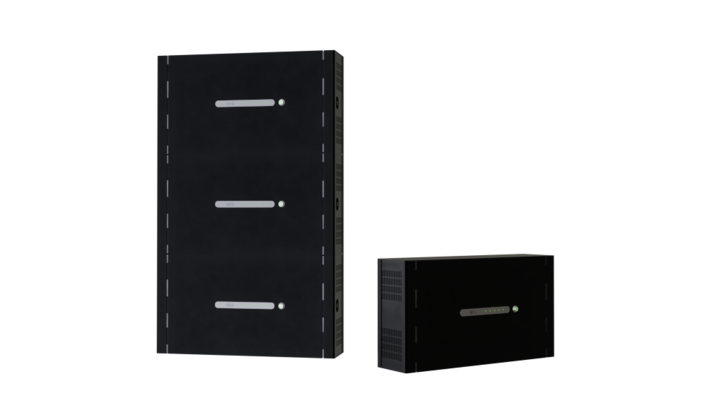High energy costs are a pressing issue for many companies, leading more commercial and industrial businesses to focus on solar power with storage solutions to ensure reliable energy price planning. “Solar self-consumption is and remains the most important driver of demand for solar power and battery storage at the moment,” says industrial engineer Guluma Megersa in a webinar with photovoltaik. Megersa is Senior Solutions Manager Smart String ESS at Huawei Fusionsolar, working at the interface between customer enquiries and product development, and receiving direct feedback from realised projects.
SOC is determined in a complex manner
The latest market figures from the Battery Charts website of RWTH Aachen University show a further increase in demand. After self-consumption, customers are looking for emergency and backup power supplies, among other things. More and more customers also want multi-use applications for storage systems.
EM-Power Europe: Start-ups present new business models for the flexibility market
On the other hand, designing for various applications involves many considerations. For example, the operational management of a C&I storage system is quite complex. The status value for the battery SOC is a calculated value based on several factors, including the chemical states of the batteries. “A service partner has to recalibrate this value at least once a year,” reports Guluma Megersa.
Luna storage system delivers more capacity

Huawei Fusionsolar
The new Luna 2000 series delivers a capacity of 215 kilowatt hours (kWh). According to the manufacturer, it features the world’s first hybrid cooling system, combining liquid and air cooling to maximise efficiency and longevity. This system remains stable even under demanding conditions, extending the battery’s service life and reducing maintenance costs.
With a maximum efficiency (RTE) of 91.3%, the intelligent Smart String ESS optimises energy management. The new storage series offers flexible capacities of 107, 161 and 215 kWh and guarantees high efficiency with a charging and discharging capacity of up to 108 kW.
TÜV Rheinland certifies safety
The series can be seamlessly integrated into the energy management system (EMS) via Modbus TCP, enabling intelligent control and real-time monitoring. A multi-layered safety concept ensures a very high level of protection, which has been awarded the highest level of Safety Prime certification by TÜV Rheinland. Patrick Zank, Business Development Manager at VDE, confirms on the basis of real test data that the new Luna system from Huawei even achieves a round trip efficiency (RTE) of 92% at 0.25C. In April, the new system was officially presented at the partner meeting in the Messe Frankfurt congress centre.
Smarter E AWARD 2025: Energy Transition pioneers shortlisted
Each LFP battery module has its own optimiser. Six to twelve modules are connected in a string, which are controlled per string via an intelligent controller. The matching battery inverter also comes from Huawei, of course. A total of 20 systems can be connected in parallel. This achieves a capacity of almost four megawatt hours (MWh). If there is a need for even more, the manufacturer has a large storage system in its portfolio that starts at two MWh.
Each cell is monitored automatically
Battery safety is a particular focus at Huawei. Each cell is monitored individually and can be isolated at module level. Active shutdown is also possible. Several detectors monitor the system for fire development, and an active exhaust air and fire extinguishing system are installed in the device. Heat and smoke detectors in the battery cabinets can trigger an alarm if the detected temperature is above the set threshold value or if smoke is detected.
Huawei commercial storage system with hybrid cooling technology
The fire suppression system is also equipped with a temperature-sensitive glass ball. If the temperature inside a battery cabinet exceeds a certain temperature and this condition persists for a certain period of time, the temperature-sensitive glass sphere breaks and firefighting is initiated. Novec 1230 is used as the extinguishing agent. Should something happen, the airbag only opens upwards to release the pressure. This prevents people standing next to the storage tank from being endangered. Further details can be found in a white paper produced in collaboration with TÜV Rheinland.
Optimisation at module level
The manufacturer's optimisers are located at module level. This means that battery modules that are not working normally are automatically bridged. They are charged and discharged independently of each other without influencing each other. “This increases the discharge capacity of energy storage systems by an average of 5%,”says Guluma Megersa. With the help of the optimisers, the modules can also be recalibrated on site without the need for a technician.
Reference projects with multi-use
There are diverse business models for battery storage systems. In addition to maximising self-consumption, they include technical and commercial peak load capping and dynamic electricity tariffs. These applications can be realised with the Luna storage system, Smart Logger, and the software behind it. However, options such as participation in the balancing energy market, electricity trading, and backup power supply are not yet available. The demand for multi-use storage applications is growing and can be supported. AI will also assist in optimising charging and discharging based on forecasts. The storage is virtually divided into different capacities, ensuring availability for each application.
Huawei already has many reference projects. One example is a chicken farm in Bavaria that focuses on more self-consumption, peak load capping and peak shifting. To achieve this, 999 kW of solar power were combined with 1,158 kW of storage. A campus with 120 kW of solar power in the Netherlands also markets two storage systems each with 193 kWh. “This requires external energy management,” explains Guluma Megersa. As such, the application also works with Huawei technology. (nhp)








